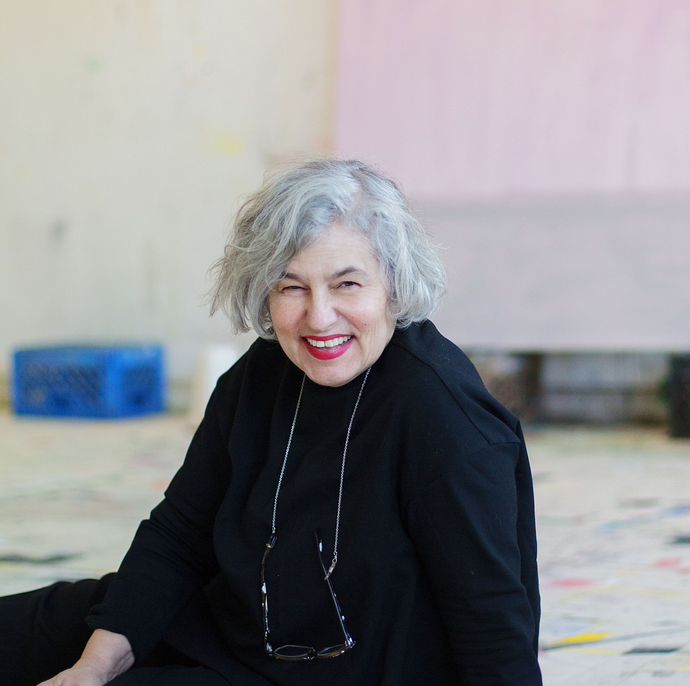
Amy Sillman
Amy Sillman is renowned for her process-driven paintings that oscillate between abstraction and figuration. She actively incorporates nontraditional mediums such as animation, zines, and installation into her artistic practice.
Biography of Amy Sillman
Amy Sillman was born in 1955 in Detroit, Michigan. She studied at Beloit College (1973) and New York University (1975). In 1979, she obtained a BFA from the School of Visual Arts in New York.
Sillman completed her Master of Fine Arts degree at Bard College in 1995, later becoming a member of the school's art faculty in 1996. She instructed students in Bard's MFA painting program from 1997 to 2013, during which she also held the position of chair of the painting department from 2002 to 2013. Following this tenure, she taught at the Städelschule in Frankfurt, Germany.
Throughout her career, Sillman has received numerous awards, fellowships, and grants, including the Painting Grant from New Jersey State Council for the Arts (1982), the NEA Fellowship in Painting (1995), the Joan Mitchell Foundation Fellowship (1999), the Pollock-Krasner Foundation Fellowship (1999), the John Simon Guggenheim Memorial Foundation Fellowship in Painting (2001), The Asher B. Durand Award from Brooklyn Museum (2012), and many more.
Her recent solo exhibitions include "Temporary Object" at Thomas Dane Gallery in Naples (2023), "Rock Paper Scissors" at Capitain Petzel in Berlin (2021), "After Metamorphoses" at Mildred Lane Kemper Art Museum in St. Louis (2021), "Twice Removed" at Gladstone Gallery in New York (2020), "The Nervous System" at Arts Club of Chicago in Chicago (2019), and many more.
Currently, Amy Sillman lives in New York, where she continues to work.
Amy Sillman's Art Style
Drawing from art historical conventions, particularly postwar American gestural painting, Sillman incorporates feminist critiques of dominant narratives surrounding mastery, genius, and power. Through this lens, she infuses her practice with elements such as humor, awkwardness, self-deprecation, affect, and doubt.
Sillman's artwork intertwines traditional formal considerations, such as investigations into color, shape, surface, and line, alongside experimentation with figure and ground, scale, and the interplay between flat and recessive space. These elements are further enriched by her integration of methods from other mediums, including drawing, cartoons, collage, and animation, as well as unconventional display techniques. Employing an introspective and personal approach, primarily rooted in drawing, she navigates a process of constructing, deconstructing, and reconstructing the painting space through layers of transformation, spontaneous action, and revision.
In her earlier works, Sillman navigated between the realms of figure, landscape, and abstraction, blending loose painting and drawing techniques to create narratives described as dreamlike, absurd, or wistful. Rendered in bright, somewhat acidic color palettes, these paintings portrayed straightforward, self-contained figures—often resembling a petite, Eve-like woman meandering through expansive landscapes—set amidst Boschian accumulations of biomorphic shapes, abstract scumbles, drips, and calligraphic lines.
During the mid-2000s, Sillman transitioned from heap-like compositions to larger scales, incorporating broader, more physical gestures and delving into themes surrounding the body, interpersonal relationships, and psychosexual tension. In 2007, she embarked on a series of large gestural abstract paintings inspired by black-and-white drawings derived from observing couples' intimate moments in domestic settings. Recreating these drawings from memory, she then manipulated and transformed them into abstract painting "templates."
Years:
Born in 1955
Country:
United States of America, New York
Personal website